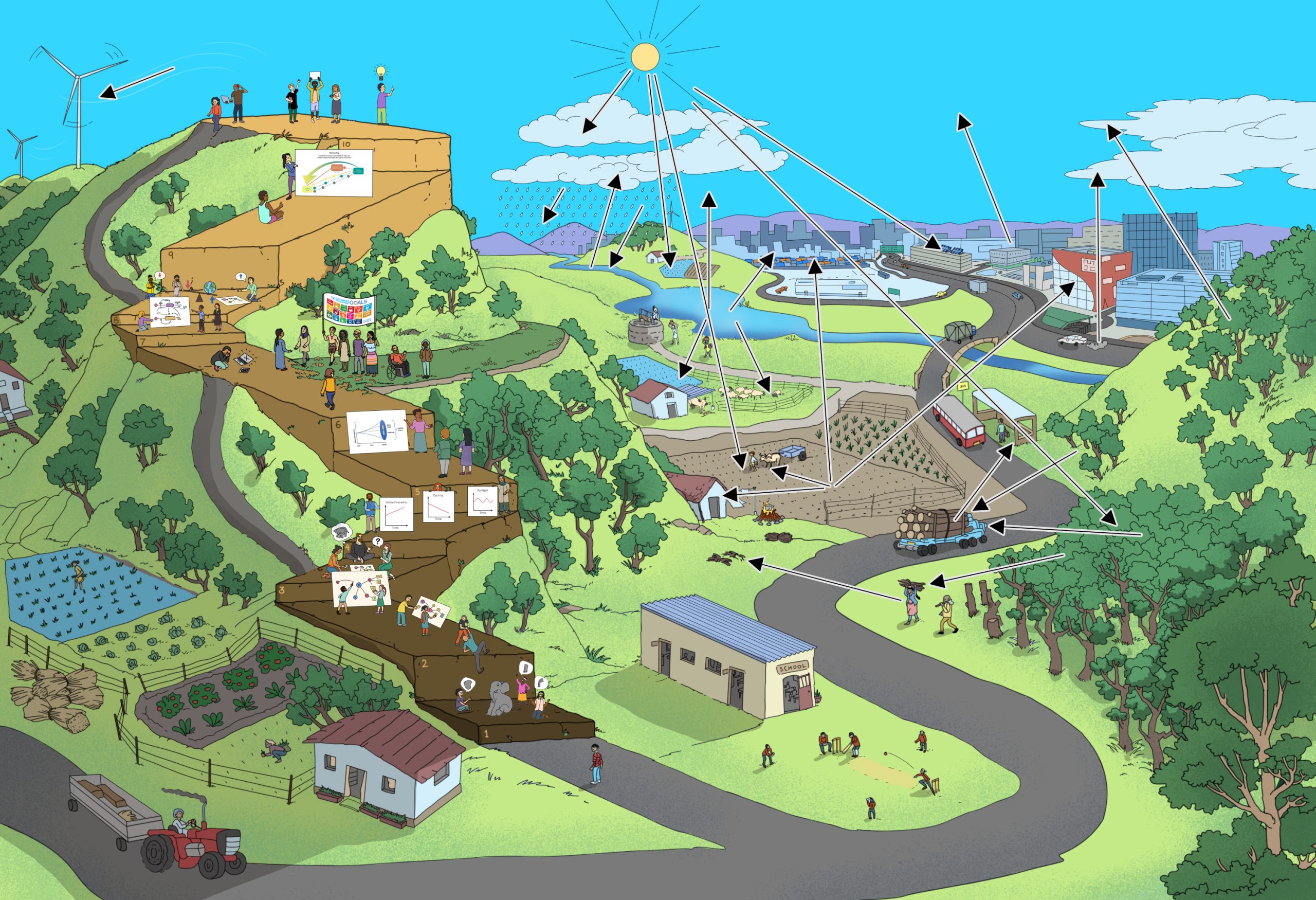Systems thinking is the ability to describe and/ or visualise a part of a complex reality, express that part of reality as a model, understand the model as a system, use the model to explain the behaviour of the system, anticipate the behaviour of the system, and evaluate its impacts on sustainable development, identify potential points of, and types of interventions, generate options to act, assess their impacts in the frame of sustainable development, and decide whether further actions are necessary or not.
1. What does this mean?
In the previous Step, learners explored the past behaviour of the system. In this Step, with the help of the developed systems model, the learners can make forecasts or projections of future situations of the chosen topic. The projections are determined by the constituent elements, interrelationships, and drivers including external stimulations and internal feedback loops. For example, weather models used by meteorology departments can provide a weather forecast for a region tomorrow, or the next few days.
.
2. What is the aim?
To enable learners to
- Recognize that it may be possible to anticipate potential futures of the chosen topic using a systems model.
- Use systems models to make projections about the chosen topic.
4. Activities, tasks and suggested learning methods
In Step 4, learners developed explanations of the past and recent behaviour for selected elements of the system. In this Step, the learners use their understanding of the behaviour of particular elements within the system, as well as the dynamism of systems as a whole, and apply it to anticipate the future behaviour of the system.
Learners can use Understanding Causation as a preparatory activity. The Scenario Analysis method is helpful for imagining the behaviour of multiple elements and more or less the whole system. The results of the Scenario Analysis may be represented in the form of a slide show, a series of charts or an Explainer Video or podcast.
Finally, the learners should develop:
- A textual or oral Structured Descriptionof the expected future behaviour of the system and certain elements of the chosen topic or reality.
- Behaviour-over-time graphs, presenting the projectionsfor how the system is anticipated to behave in the future.
Learning methods suggested are:
5. Conclusion
- Reflect on what is learnt, either by summarizing the activity or asking learners to do so
- In this Step, learners should have understood that it is possible to anticipate the future using an understanding of systems, get insights on the best- and worst-case situations in the future.
- Ask the group to think about and share further questions about the system they are exploring.
Illustration of staircase model for further leading questions
6. Suggested Further Leading Questions
- What is the use of looking into the future (with a systems model)?
- Having anticipated future situations with the help of systems analysis, can you also understand whether these will be positive or negative situations? Is that the future you want?
- Can human beings change the behaviour of systems?


